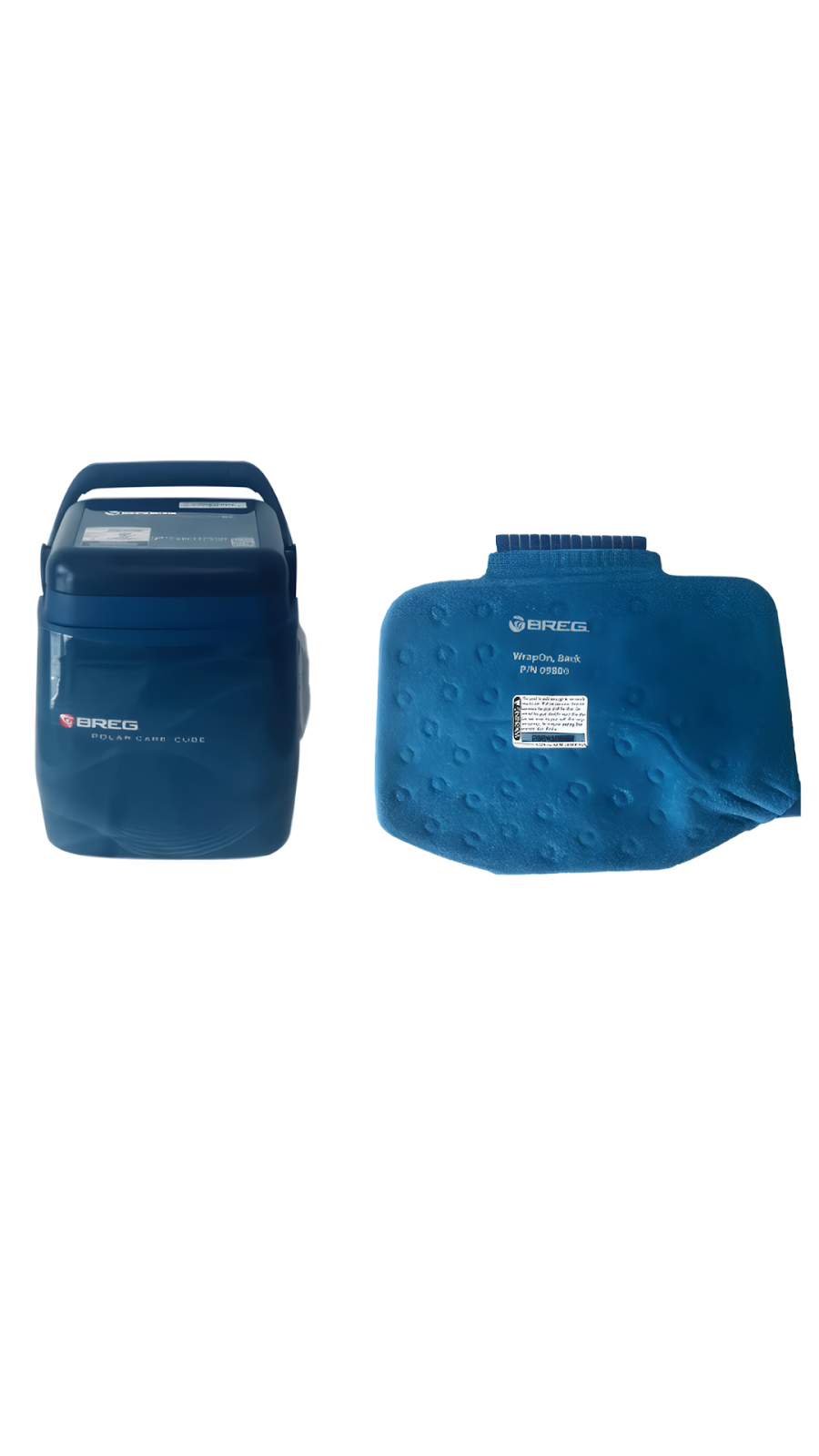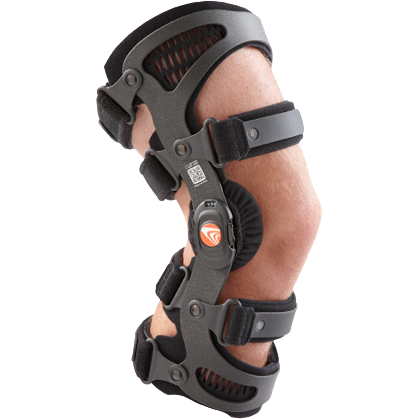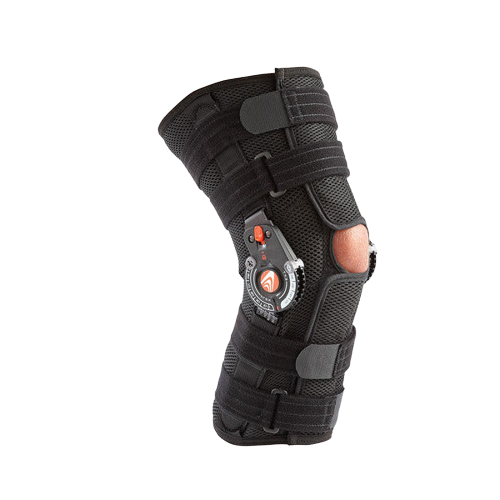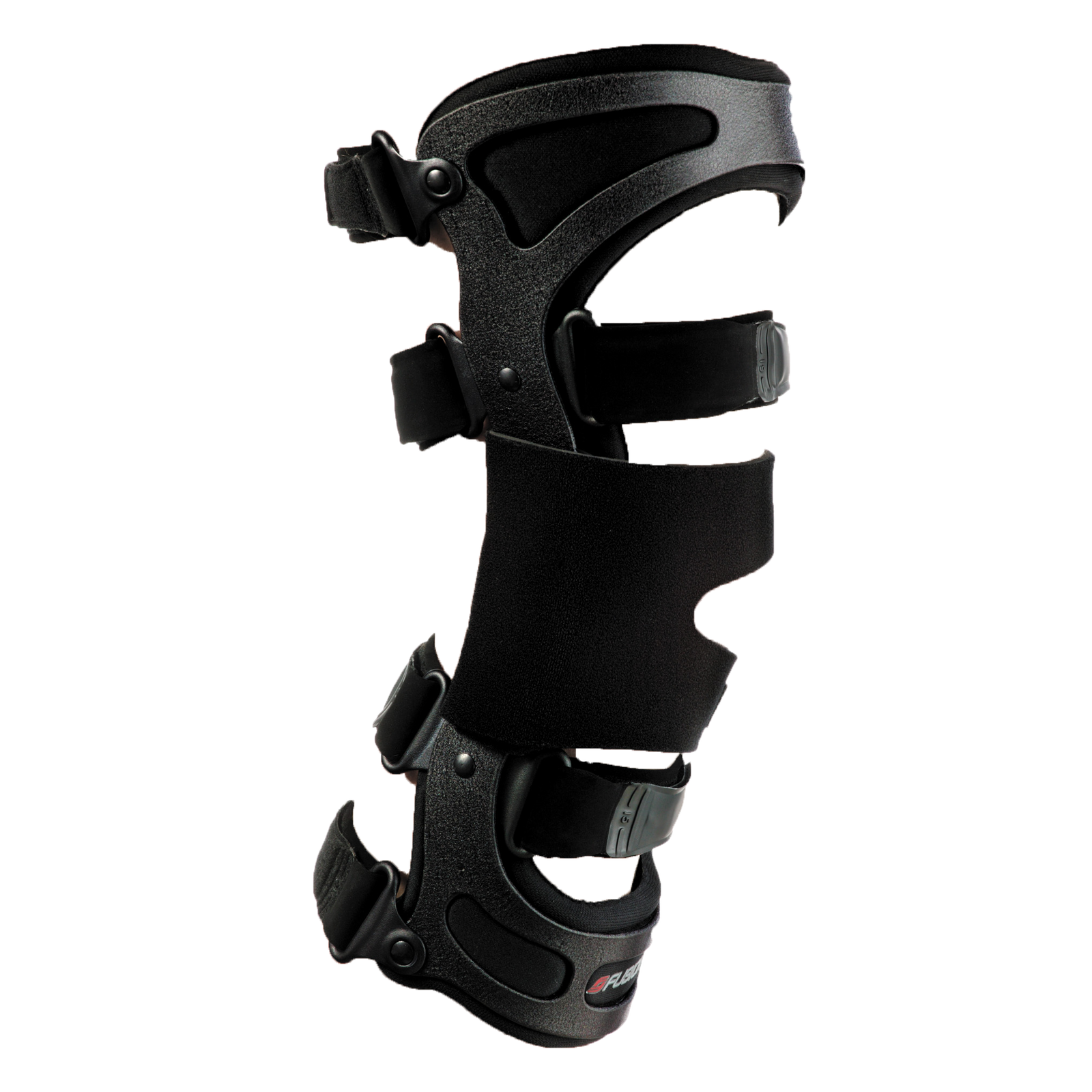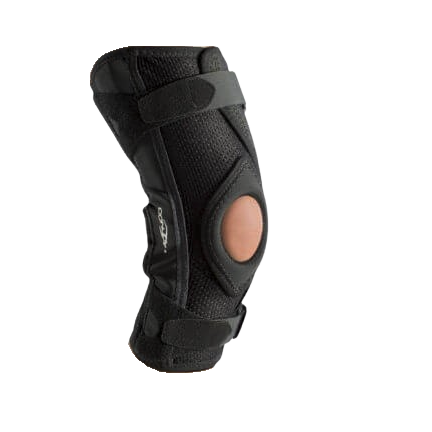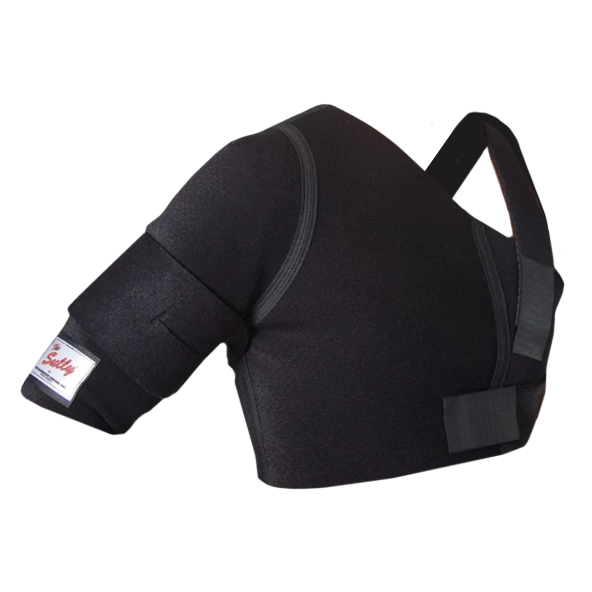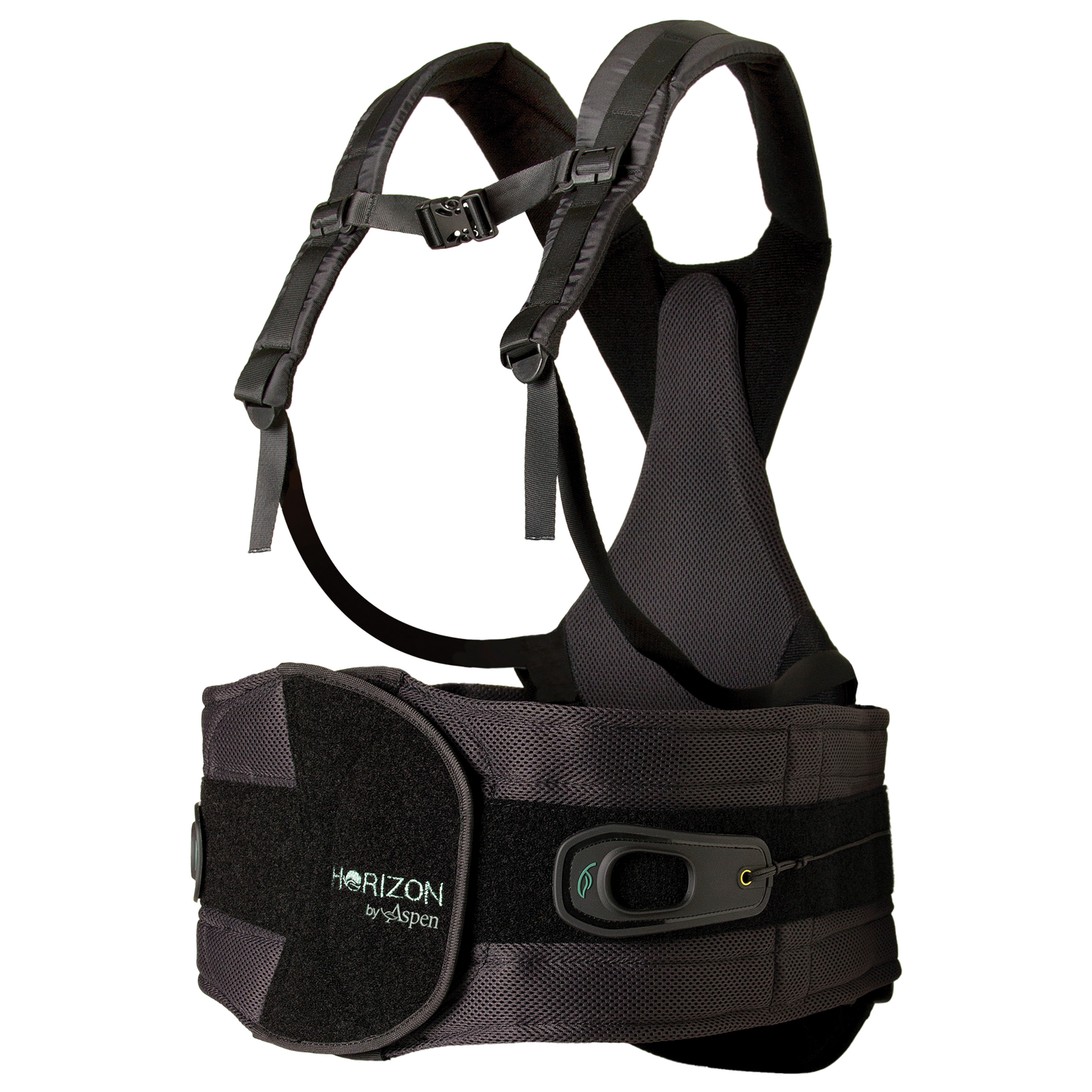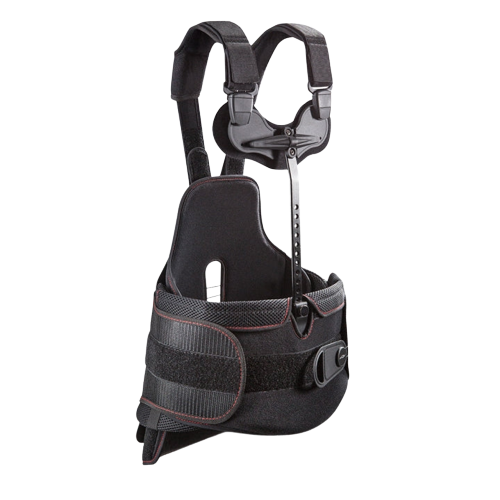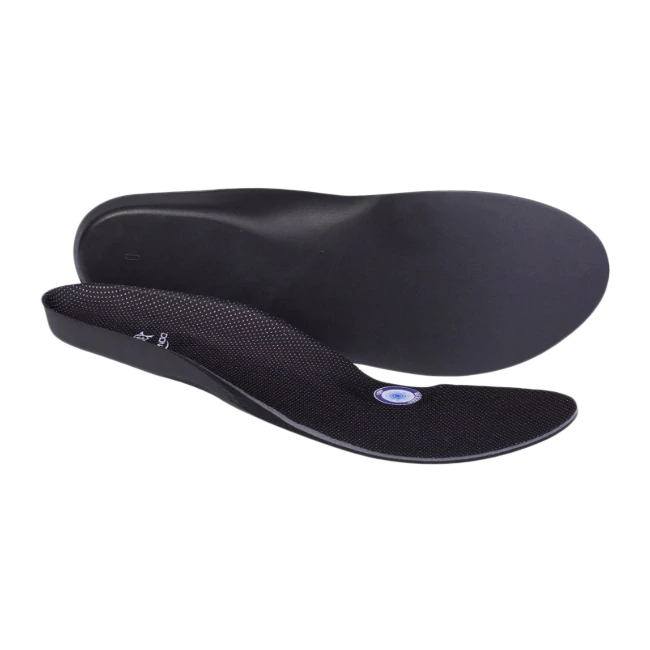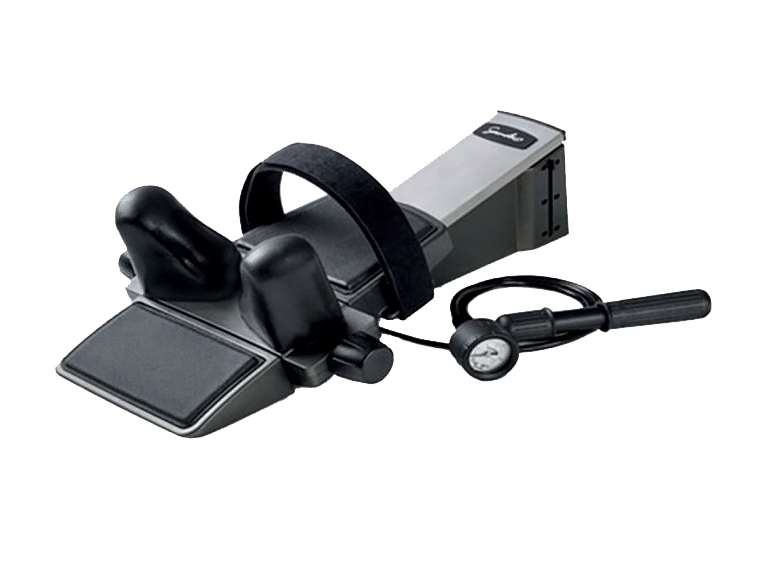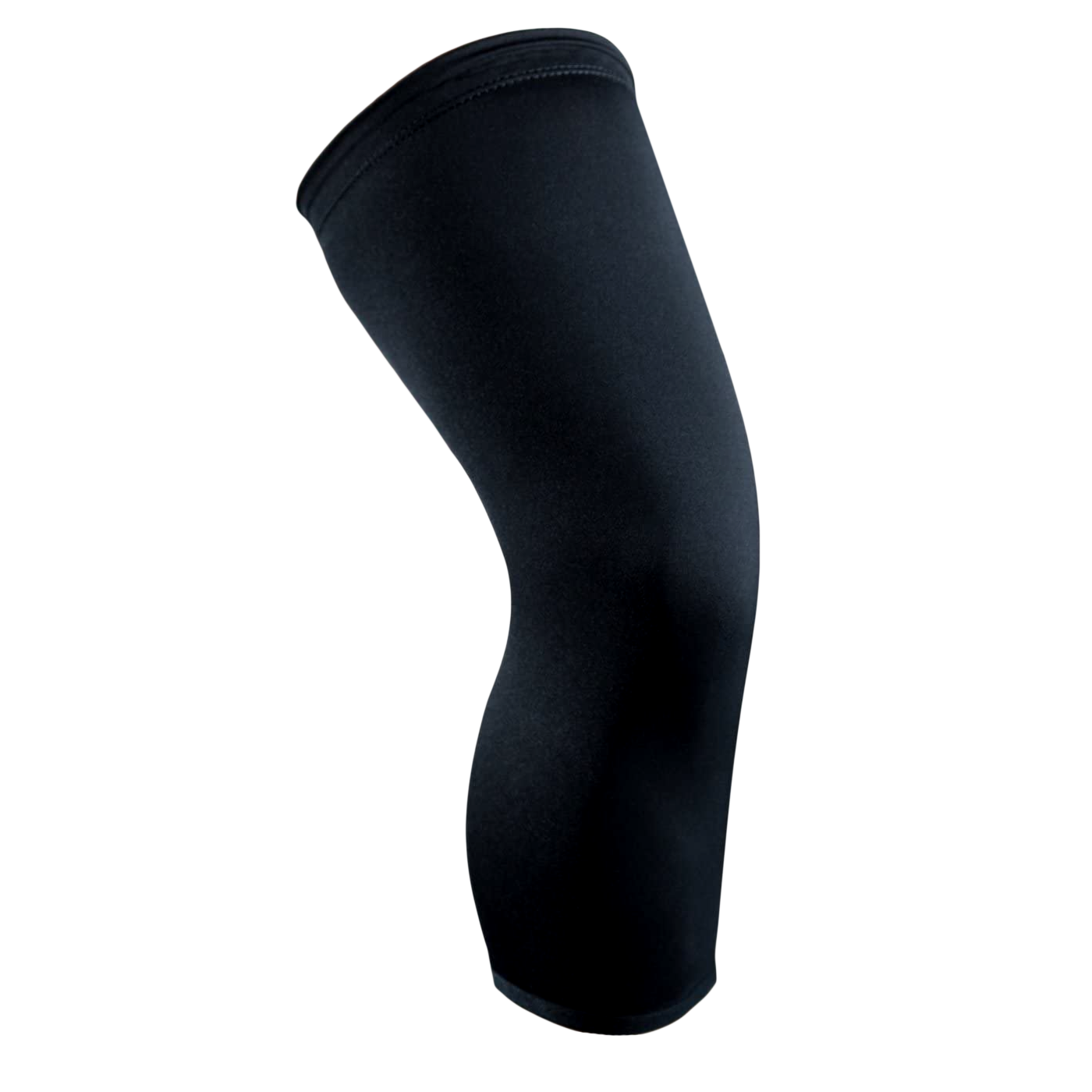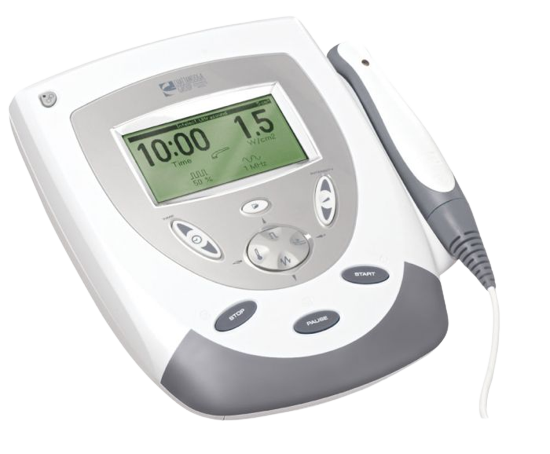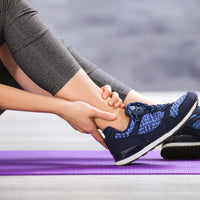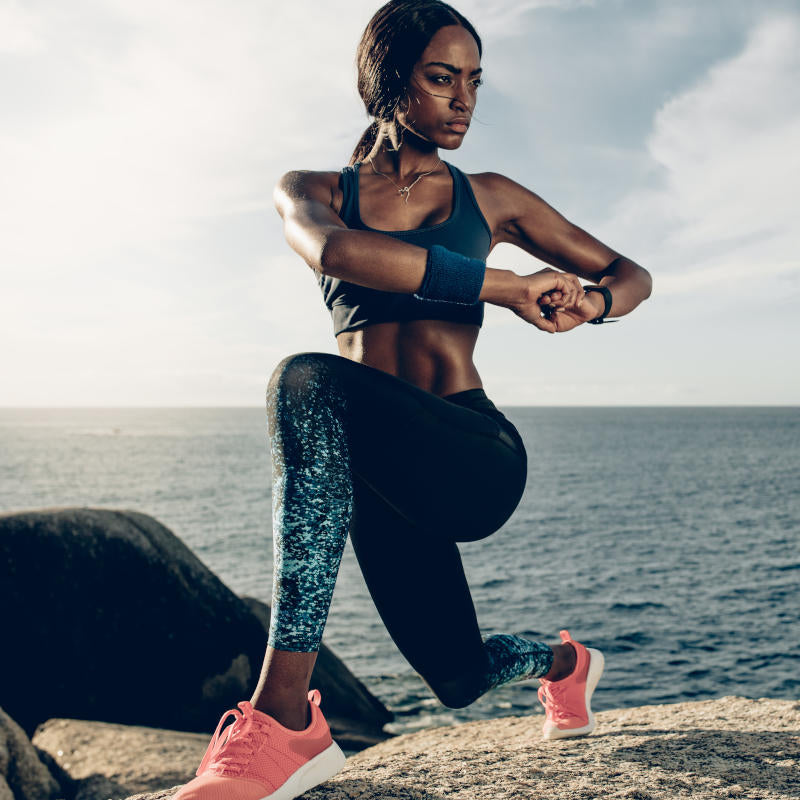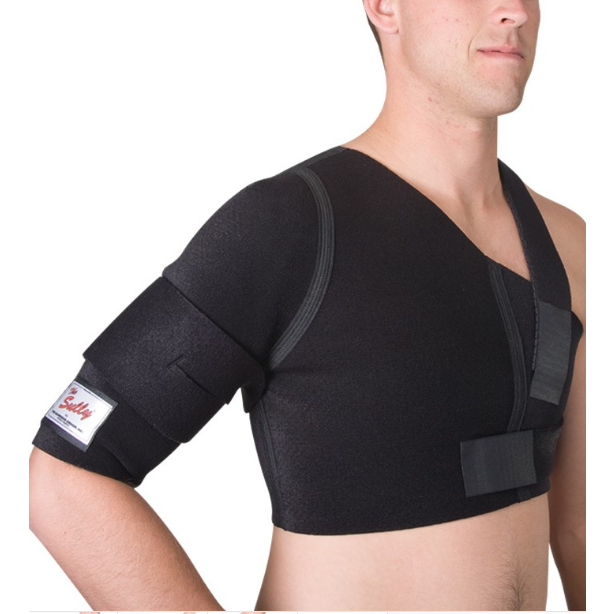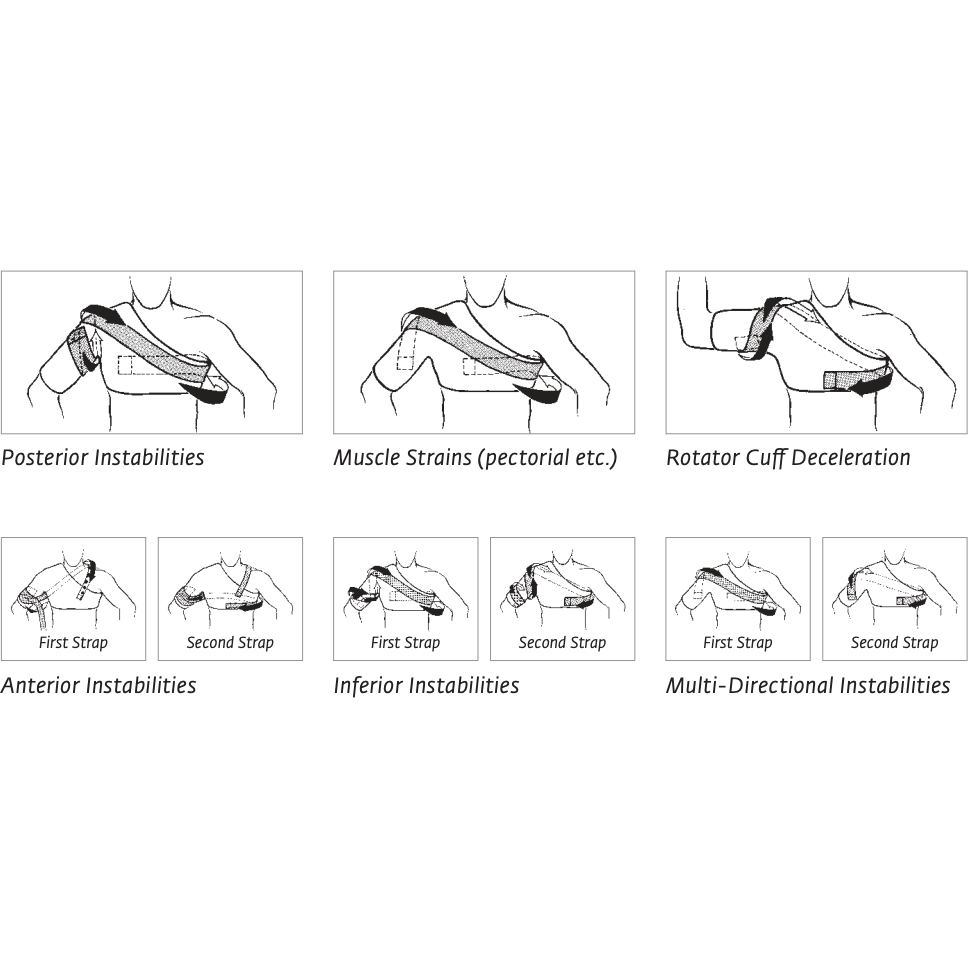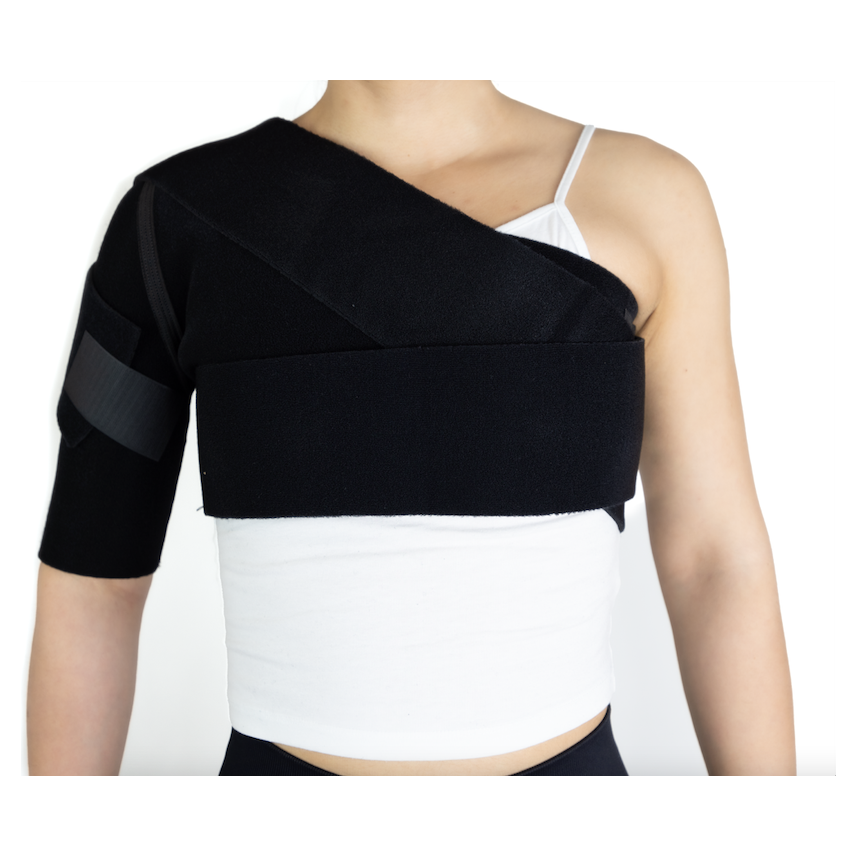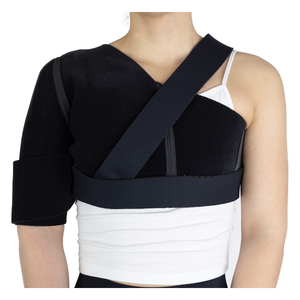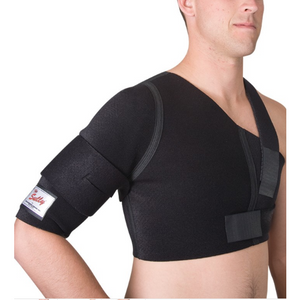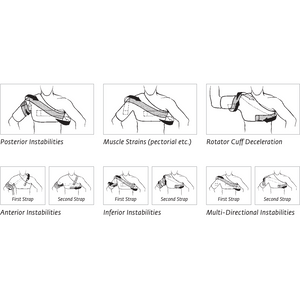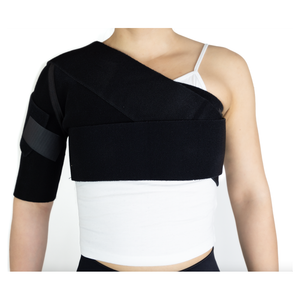The DonJoy® Sully Shoulder Brace is designed to support and protect
- ANTERIOR, MULTI-DIRECTIONAL, INFERIOR, AND POSTERIOR INSTABILITIES
- ROTATOR CUFF DECELERATION
- SHOULDER AC SEPARATIONS
- MUSCLE STRAINS
The breathable, hook-sensitive neoprene vest grips the skin to allow precise placement of the donut-shaped foam pad. The hard-shelled foam pad helps protect the AC joint from further injury. Simply apply an adhesive-backed hook to the foam pad to prevent migration. No restrictive and uncomfortable straps are necessary!
On the inside the perforated, breathable, rubber-like neoprene grips the skin so the support moves with the athlete - it's as if the stabilization straps are attached directly to the body.
The Sully Shoulder Brace is a support brace used to stabilize or completely restrict shoulder movement after an operation or injury. The shoulder brace is ideal for positioning your injured shoulder to protect it from inferior, anterior, posterior, and multi-directional instabilities. The brace is also helpful for persons with shoulder separations, rotator cuff deceleration, and muscle strains.

Product Overview
The Sully Shoulder Brace is made out of breathable neoprene that stretches like rubber. The material grips your skin, causing it to move as you move.
The shoulder brace (sometimes called a shoulder harness) also has a pair of stabilization straps that you should attach to the Velcro tape. The strapping helps to reduce overhead motion at the shoulder area.
The Sully Shoulder Brace is suitable for all persons with injuries, and especially athletes. You could wear it when playing basketball, football, hockey and other kinds of overhead sports.
The shoulder brace also has a universal fit that makes it ideal for wearing on either your right or left shoulder, and it is easy to wear. Inside the package, you will find instructions with pictures to guide you on properly placing the straps.
The Sully Shoulder brace is available in five sizes. Find your ideal size by checking your measurements, bicep, and chest against a sizing chart to see the right fit. Avoid flexing your muscles when taking the measurements.
Whom Is The Product Meant For?
The Sully Shoulder Brace is designed for any person who has injured an arm or a shoulder and needs support and immobilization of the injured areas. The shoulder brace helps to prevent re-injury.
Persons looking to get back to sports and other physical activities after recovering from a shoulder injury can also benefit from the extra support for their shoulders.
How To Use This Product
To fit your shoulder brace, start by unfastening the strap to have as much strap length as possible. Put the shoulder pad in place, and then place the arm with the injured shoulder inside the sleeve. Pull the sleeve upwards to raise the brace to your shoulder.
Next, pull the strap over your head and raise your other arm so that the strap can go down to your chest. Now, adjust the strap using the fastener to have a tight hold. Make sure that the brace is comfortable.
How To Maintain This Product
Wash your shoulder brace occasionally using laundry detergent or mild soap using some cold water. Rinse it up and leave it outside to air dry. Be careful not to wash it too often as that could damage the brace material.
When your brace gets worn out, replace it. Go for a good quality that lasts a long time, like the Sully Shoulder Brace, to avoid occasional spending on shoulder braces.
Benefits of Using This Product
The Sully Shoulder Brace is helpful in different ways. They include:
1. Provides Support to Injury Sites
An injury site, such as a dislocated shoulder, should have its bones and muscles stay in place to start healing. The support speeds up the recovery and ensures that the shoulder heals while in the correct position. Without the support, you could develop an infection, a permanent deformity, or a long-term joint problem.
The shoulder brace also compresses the swollen joints, which helps to bring down the inflammation. For this reason, the brace should have a close fit to offer the compression and support needed.
2. Keeps Your Shoulder Elevated
Shoulder elevation improves circulation in your arm and shoulder. The better the circulation, the faster your healing, because the cells in your shoulder access essential nutrients and oxygen needed for cell repair and regeneration.
3. Protects Your Skin
The skin of your shoulder has many superficially paced nerve tendons. Wearing a shoulder brace helps protect the skin and the underlying tendons from possible knocks and bumps as you move. The Sully Shoulder Brace also shields you, preventing further injury.
4. Provides Compression
By compressing your shoulder, the brace enhances the receptors on your skin, sending messages to your brain regarding your shoulder's positioning. Sometimes, after an injury like dislocation or subluxation, the shoulder has a decreased sense of awareness in the affected area. But, compression allows the receptors on your skin to work on behalf of the damaged shoulder or muscle receptors.
5. Limits the Extent of the Injury
The shoulder brace also helps decrease the extent of injury by limiting your shoulder's range of motion. Too much movement could cause damage to your shoulder cartilages and ligaments, which extends the injury.
However, the Sully Shoulder Brace does not completely immobilize you because you can still move your arm up forwards to reach for items placed in front of you. In this way, you can still perform all the overhead activities you wish but are limited from getting into risk positions.
6. Strengthens Your Shoulder
The brace has neoprene straps that offer resistance to your stretching. Every time you move your hand, your muscles must contract to resist the elasticity of the straps. As you work your muscles, you will keep them from decreasing strength, a symptom that comes with reduced arm use.
7. Prevents Accumulation of Heat on Injury Site
The Sully Shoulder Brace is made of lightweight to decrease the likelihood of trapping heat underneath. The material used is very thin breathable neoprene and some mesh in places where the neoprene's support is not needed. The lightweight feature makes the brace comfortable to wear and makes it easier for sweat to escape from the covered area.
Heat retention on your body negatively affects performance and can be uncomfortable for you. Persons involved in sporting activities would especially find this helpful feature because the brace limits heat retention, allowing you to go on with your activities well.
Alternatives to Using This Product
Besides the shoulder brace, you could also use a posture brace, an arm sling, or shoulder taping to support your injured shoulder.
1. Posture Brace
A posture brace, also called a posture corrector, works by propping your shoulders to the proper position to correct your posture. With support and upright positioning, your shoulder heals faster.
Unfortunately, the posture brace only helps you while it is on. It is said that the posture brace does more harm than good because it does not strengthen the muscles in your back and neck. Your body starts to rely on the posture brace to hold itself up, especially if you wear it for extended periods.
2. Arm Sling
An arm sling is also a valuable device for supporting and immobilizing your injured shoulder, hand, or arm. Arm slings are popular because they work well for different kinds of injuries. The arm sling holds your shoulder or arm in place and helps to avoid unnecessary movement.
The arm sling works well but has several drawbacks. It rests and immobilizes the hand and does not allow for flexing or stretching your muscles, which could weaken them. As such, if used in the long term, the arm sling could cause your shoulder joints to stiffen.
Some people develop a frozen shoulder when the shoulder loses motion completely. An arm sling is unsuitable for persons who want to remain active, such as those exercising or playing sports.
3. Shoulder Taping
Shoulder taping is a technique used to stabilize your shoulder by applying Kinesio tape all around it. The tape supports the shoulder area, helps to relieve pain, and brings down inflammation. It is an inexpensive remedy because all you have to do is apply tape to the skin on your shoulders in a way that immobilizes the shoulder.
However, the drawback of shoulder taping is that it requires skill to trap on the shoulders effectively. Also, applying the tape takes a long time and can cause you to be late for your activity. The tape could also pull on your skin or irritate your skin, causing scarring.
Sports players also complain that the taping may come off during the game, and once this happens, the shoulder is no longer protected. The lack of protection aggravates the existing injuries and makes them even more painful.
Additional Accessories
Some of the accessories you could add to your shoulder brace therapy are:
- Pain relief medication: Although the shoulder brace does not relieve pain, it protects you from aggravated pain. So, if you are in pain, use pain relief medication to bring it down.
- Cold compress: A cold compress is also a suitable accessory because it brings down the swelling on your shoulder. Apply it to the injury site several times a day. It also helps to numb the injury to protect you from sharp pains.
- Muscle relaxants: You may also need muscle relaxants to bring down the tension, spasms, or pain in your shoulder joints. But, these require a prescription from the doctor.
Other FAQs
1. How Do I Know if My Shoulder Brace Is Tight Enough?
The strap of your shoulder brace determines how well the brace holds your shoulder. It's important to ensure that it is tight but not too tight. The hold should be comfortable, one that allows you to fit your fingers underneath the strap.
2. For How Long Do I Need To Wear My Shoulder Brace?
The answer to this question must take into account several factors. The most important of all is the extent of your injury. You may need to wear the shoulder brace until the injury heals completely.
If you have recovered from an injury, consider the type of sport or physical activity you engage in. Some sports involve a lot of movement that could cause you another injury or infection.
A sporting enthusiast who has weak joints may have to wear the shoulder brace throughout their sporting life to reduce the risk of injury. The shoulder brace becomes a part of your sports gear. People who are not engaged in strenuous activity can stop wearing the brace in 3-6 months.

